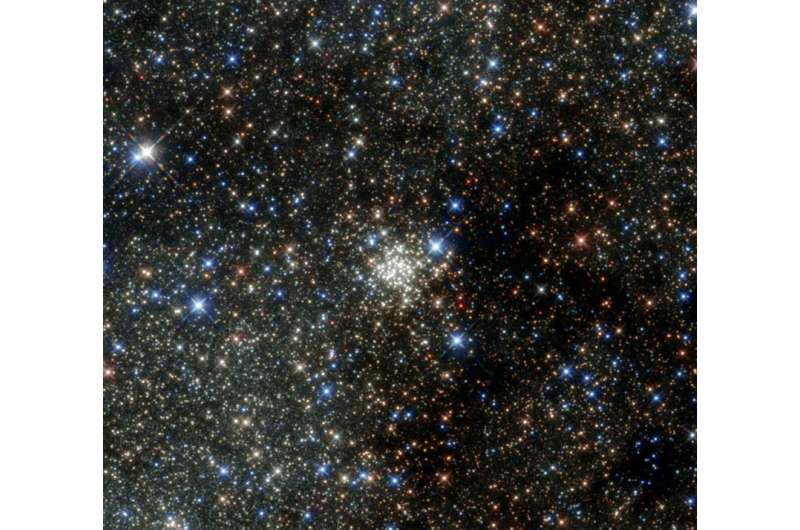How do massive young star clusters form?

Young massive star clusters are systems of stars with more than about ten thousand solar-masses of material and ages less than about one hundred million years that are gravitationally bound together. In these clusters the stellar densities can reach and even exceed the densities found in stellar globular clusters, more evolved systems that host hundreds of thousands of stars in volumes only tens of light-years across. Observations suggest that the young massive clusters come in all sizes: their mass distribution ranges from low mass, open clusters with about one hundred solar-masses to high-mass ones with a hundred million solar-masses.
The reason why young massive clusters have such a wide range of sizes is not understood, but it has important implications. The highest mass ones could be analogous to the original state of today's oldest, large globular clusters which formed in the early universe. The thinking is that in the early universe only the highest mass clusters would have been able to survive and evolve until today; the lower mass clusters would quickly be been disrupted. If these scenarios are true, it suggests that an understanding of young massive clusters may lead to insights into the formation of clusters across the full mass range including globular clusters.
The mechanism by which young massive star clusters form is not well understood. The two most popular scenarios are formation in a bound, centrally condensed natal cloud which subsequent evolves and expels the remaining gas (the "monolithic model"), or formation in smaller stellar groups that hierarchically come together to become centrally condensed (the "hierarchical model"). CfA astronomer Daniel Walker and his colleagues tested a refinement of these two scenarios in which the cluster forms in the "conveyor-belt" mode (both the cloud and the star cluster shrink together), the "in-situ" mode (the dense gas experiences little or no contraction), or the "popping" mode (the gas is at higher density than the young stars but then expands to lower density).
The scientists compiled a sample of ten young massive gas clouds and compared them to six existing young massive clusters in the central region of our galaxy, and then examined their properties using the submillimeter dust emission which measured the masses and temperatures. They found that the "conveyor-belt" mode of formation was consistently more probable, although in some instances the "in situ" mode was plausible. (The "popping" mode was never preferred.) The results suggest that young massive star clusters form as clouds gradually contract and accumulate more mass in their central regions along with concurrent star formation.
More information: "Comparing Young Massive Clusters and their Progenitor Clouds in the Milky Way," D. L. Walker, S. N. Longmore, N. Bastian, J. M. D. Kruijssen, J. M. Rathborne, R. Galv´an-Madrid and H. B. Liu, MNRAS 457, 4536, 2016.
Journal information: Monthly Notices of the Royal Astronomical Society
Provided by Harvard-Smithsonian Center for Astrophysics




















